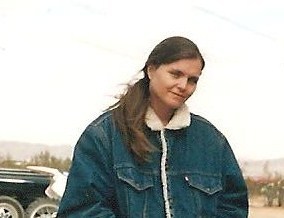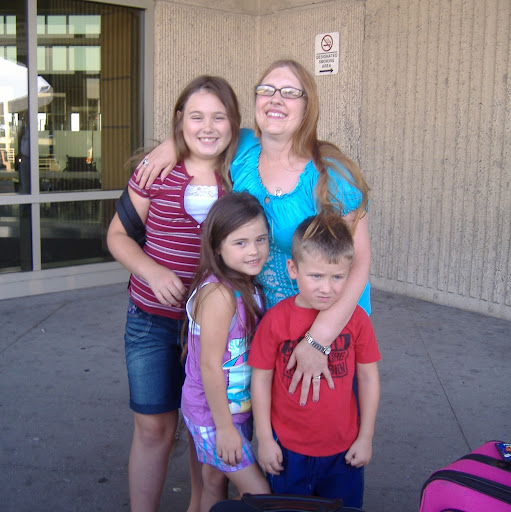Carol B May
age ~77
from Myrtle Beach, SC
- Also known as:
-
- Carol Butler May
- Carol A May
- Carol T Butler
- Carol Y
Carol May Phones & Addresses
- Myrtle Beach, SC
- Arlington, VA
- Gainesville, VA
- Manassas, VA
- Annandale, VA
- Herndon, VA
- Woodbridge, VA
- Alexandria, VA
- 8093 Crooked Oaks Ct, Gainesville, VA 20155
Work
-
Company:Carruthers realtors
-
Address:3050 Chain Bridge Rd, Fairfax, VA 22030
-
Phones:7038361464
-
Position:Vice president relocation
-
Industries:Public Relations Services
Isbn (Books And Publications)

Us Patents
-
Design Of Viscoelastic Coatings To Reduce Turbulent Friction Drag
view source -
US Patent:RE41398, Jun 29, 2010
-
Filed:Feb 10, 2005
-
Appl. No.:11/054719
-
Inventors:Carol L. May - Falls Church VA, US
Gennadiy A. Voropayev - Kiev, UA -
Assignee:Cortana Corporation - Falls Church VA
-
International Classification:G01N 19/02
G01N 3/56 -
US Classification:73 10
-
Abstract:A method is provided to select appropriate material properties for turbulent friction drag reduction, given a specific body configuration and freestream velocity. The method is based on a mathematical description of the balance of energy at the interface between the viscoelastic surface and the moving fluid, and permits determination of the interaction of turbulent boundary layer fluctuations with a viscoelastic layer by solving two subtasks—i. e. , a hydrodynamic problem and an elasticity problem, which are coupled by absorption and compliancy coefficients. Displacement, velocity, and energy transfer boundary conditions on a viscoelastic surface are determined, and a Reynolds stress type turbulence model is modified to account for redistribution of turbulent energy in the near-wall region of the boundary layer. The invention permits drag reduction by a coating with specified density, thickness, and complex shear modulus to be predicted for a given body geometry and freestream velocity. For practical applications, viscoelastic coatings may be combined with additional structure, including underlying wedges to minimize edge effects for coatings of finite length, and surface riblets, for stabilization of longitudinal vortices.
-
Design Of Viscoelastic Coatings To Reduce Turbulent Friction Drag
view source -
US Patent:6516652, Feb 11, 2003
-
Filed:Apr 10, 2000
-
Appl. No.:09/546380
-
Inventors:Carol L. May - Falls Church VA
Gennadiy A. Voropayev - Kiev, UA -
Assignee:Cortana Corporation - Falls Church VA
-
International Classification:G01N 356
-
US Classification:73 10
-
Abstract:A method is provided to select appropriate material properties for turbulent friction drag reduction, given a specific body configuration and freestream velocity. The method is based on a mathematical description of the balance of energy at the interface between the viscoelastic surface and the moving fluid, and permits determination of the interaction of turbulent boundary layer fluctuations with a viscoelastic layer by solving two subtasksâi. e. , a hydrodynamic problem and an elasticity problem, which are coupled by absorption and compliancy coefficients. Displacement, velocity, and energy transfer boundary conditions on a viscoelastic surface are determined, and a Reynolds stress type turbulence model is modified to account for redistribution of turbulent energy in the near-wall of the boundary layer. The invention permits drag reduction by a coating with specified density, thickness, and complex shear modulus to be predicted for a given body geometry and freestream velocity. For practical applications, viscoelastic coatings may be combined with additional structure, including underlying wedges to minimize edge effects for coatings of finite length, and surface riblets, for stabilization of longitudinal vortices.
Name / Title
Company / Classification
Phones & Addresses
Vice President Relocation
Carruthers Realtors
Public Relations Services
Public Relations Services
3050 Chain Bridge Rd, Fairfax, VA 22030
Executive Officer
Nationalart Education Associat
Social Services
Social Services
1916 Association Dr, Herndon, VA 20191
Incorporator
THE EMORY G. MAY EVANGELISTIC MINISTRIES
Vice President Relocation
Carruthers Realtors
Public Relations Services
Public Relations Services
3050 Chain Brg Rd, Fairfax, VA 22030
7038361464
7038361464
Director, Vice President
May's Dress Shop, Inc
License Records
Carol Elizabeth May
License #:
P001167 - Expired
Category:
Social Work
Issued Date:
Dec 1, 1998
Expiration Date:
May 31, 1999 - Expidre
Type:
Clinical Social Worker Associate
Carol B May
License #:
RS108632A - Expired
Category:
Real Estate Commission
Type:
Real Estate Salesperson-Standard
Classmates

Carol Adkins (May)
view sourceSchools:
Valencia Park Elementary School Fullerton CA 1966-1973, D. Russell Parks Junior High School Fullerton CA 1973-1975
Community:
Jennifer Mieirs, John Hubbard, David Curtis, Melinda Linda

Carol May
view sourceSchools:
Luverne High School Luverne AL 1992-1996
Community:
Virginia Kilgore, Patricia Hyland

Carol May (Lowe)
view sourceSchools:
Tecumseh High School Tecumseh MI 1957-1961

Carol May (Dilbeck)
view sourceSchools:
Morton High School Hammond IN 1971-1975
Community:
David Eberle, Ron Shindle

Carol Lee (May)
view sourceSchools:
Beulah Hubbard High School Little Rock MS 1955-1959
Community:
Henry Walker, Henry Munn, Marsha Alexander, Steve Bond, Joseph Deen, Linda Hudson

Carol May
view sourceSchools:
Poplar Bridge Elementary School Bloomington MN 1967-1971
Community:
Rhonda Lofland

Carol May (Byrne)
view sourceSchools:
Vancouver Technical Secondary School Vancouver Saudi Arabia 1968-1972
Community:
Lynda Doucette, Carol Stewart, Kate Howarth

Carol May (Rowley)
view sourceSchools:
Washington County Career Center Marietta OH 1986-1988
Community:
Russ Walters, Joseph Erb, Melissa Davis
Youtube
Plaxo

Carole May
view sourceMeeting and Events Professional for 30 years.

Carol May
view source
Carol May
view sourcemedical receptionist at Totalcare for Women

Carol Haataja May
view source
Carol Siller May
view source
Carol Sachitano May
view source
Carol Pohlpeter May
view source
Carol Carlson May
view source
Carol Elizabeth May
view source
Carol Garrison May
view source
Carol Cimock May
view sourceMyspace
Googleplus

Carol May
Work:
Pressmark pressings
Highgrove rest home
Highgrove rest home
Education:
Polesworth high school, Dordon combined school
Relationship:
Its_complicated
About:
I was born in Dordon, where i lived until 2001, when we moved to wales. I have 2 children, Lisa and Robert. I am married to Peter May. My family still live in the midlands. I love living in Fishguard ...
Bragging Rights:
Have 2 children

Carol May

Carol May
Tagline:
Love to live, laugh and love!!

Carol May

Carol May

Carol May

Carol May

Carol May
Get Report for Carol B May from Myrtle Beach, SC, age ~77










